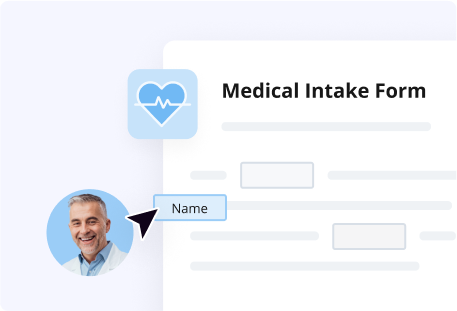Type any topic that interests you
Unlock the ins and outs of automating patient registration form for emergency services with course

About this program
After finishing this course, you’ll be able to take your practice to the next level by reducing your time spent on inefficient manual information collection, improving the experiences of your patients, and minimizing risks of data breaches and non-compliance with HIPAA legal frameworks.
What’s included:
- Comprehensive classes covering the crucial aspects of developing a Flow for emergency services an enhanced patient intake operation.
- A useful online test that lets you refresh and solidify your knowledge on patient registration Unlock the ins and outs of automating patient registration form for emergency services with course automation.
- A badge certifying your new skills and expertise in patient intake automation.
What will you learn?
- A detailed walkthrough of steps to develop your Flow from A to Z with the course.
- The best methods of setting up your patient registration Unlock the ins and outs of automating patient registration form for emergency services with course for emergency services flow.
- A guide on how to integrate with some available services and systems of record.
- Insightful pieces of advice for operating your Flow with maximum productivity and minimum wasted effort.
Who can take advantage of this course?
- Healthcare workers providing emergency services care and collecting data with patient registration Unlock the ins and outs of automating patient registration form for emergency services with course from patients.
- Medical office admins, such as Front Desk Supervisors, ensuring seamless office activities.
- IT professionals working in the healthcare industry.
More courses you might like
What our students say
Start learning today
Sign now for free
Questions & answers
This kind of software refers to apps designed to improve and automate patient information collection and handling. Such patient registration application usually comes with tools like dynamic Unlock the ins and outs of automating patient registration form for emergency services with course, secure data storage, and integration with other healthcare technologies. If you want more details on how it works, check out the course options that airSlate Academy provides.
The patient registration is a critical component of patient registration. It enables healthcare providers to collect important patient data by means of form, like personal and contact details, health history, appointment scheduling, and insurance information. Patient registration significantly affects your clients’ general experience by establishing a favorable initial impression, decreasing waiting times, and offering healthcare workers with precise data for treatment and insurance claims.
airSlate is all about flexibility. You can choose how to start setting up your Flow: entirely from scratch, utilizing your own document(s), or get a head-start with our ready-to-use patient registration form templates. You can find more in-depth details on putting together and launching the Flow within our new course.
Start by opening a new document and choosing a right template. Then, include sections and fields to your document to collect patient data, save it and print it out for patients to complete when they visit your medical care center. As an option, you can make the most of airSlate and discover how to set up and automate patient registration form for emergency services or any other objective and reduce the manual input by using different automation tools. If you need assistance setting it up, check out our new course.
We designed our course for everyone involved in emergency services care who is looking for ways to streamline the patient admission experience through the use of contemporary technologies. This group includes medical professionals with a wide range of job: from doctors and nurse practitioners to front-office admins and receptionists. Also, our patient registration form program will be great for IT professionals looking for automated options to design and integrate efficient and safe systems for gathering and dealing with patient information.
Common bottlenecks of the patient registration process are manual information entry in form, long wait times, and the risks of losing or misplacing patient records. Automation will let handle these issues by digitizing patient intake operations, automating routine tasks including submitting personal data and medical history forms for emergency services care, and keeping patient data online, which can increase precision, decrease waiting periods, and enhance document encryption.












